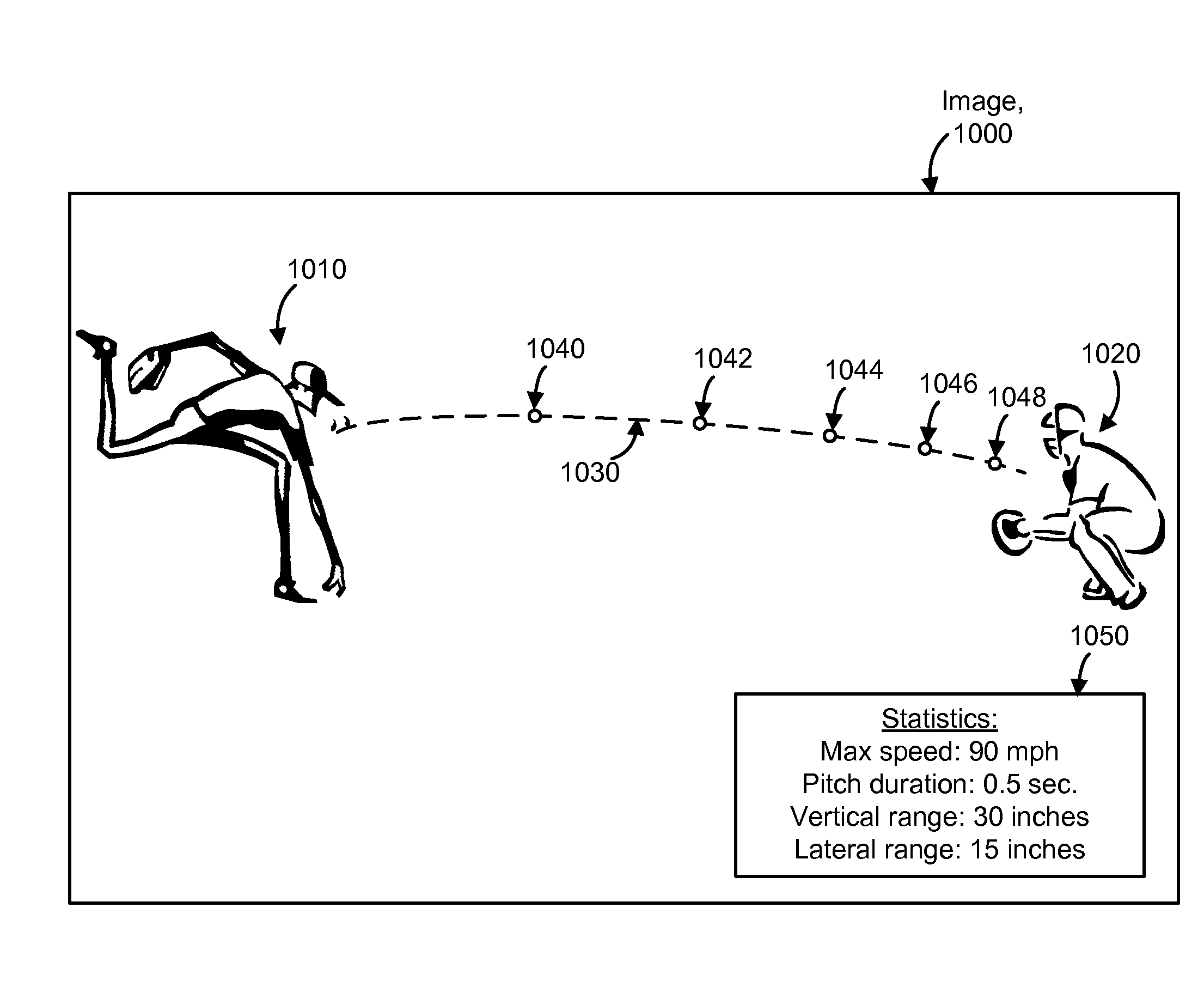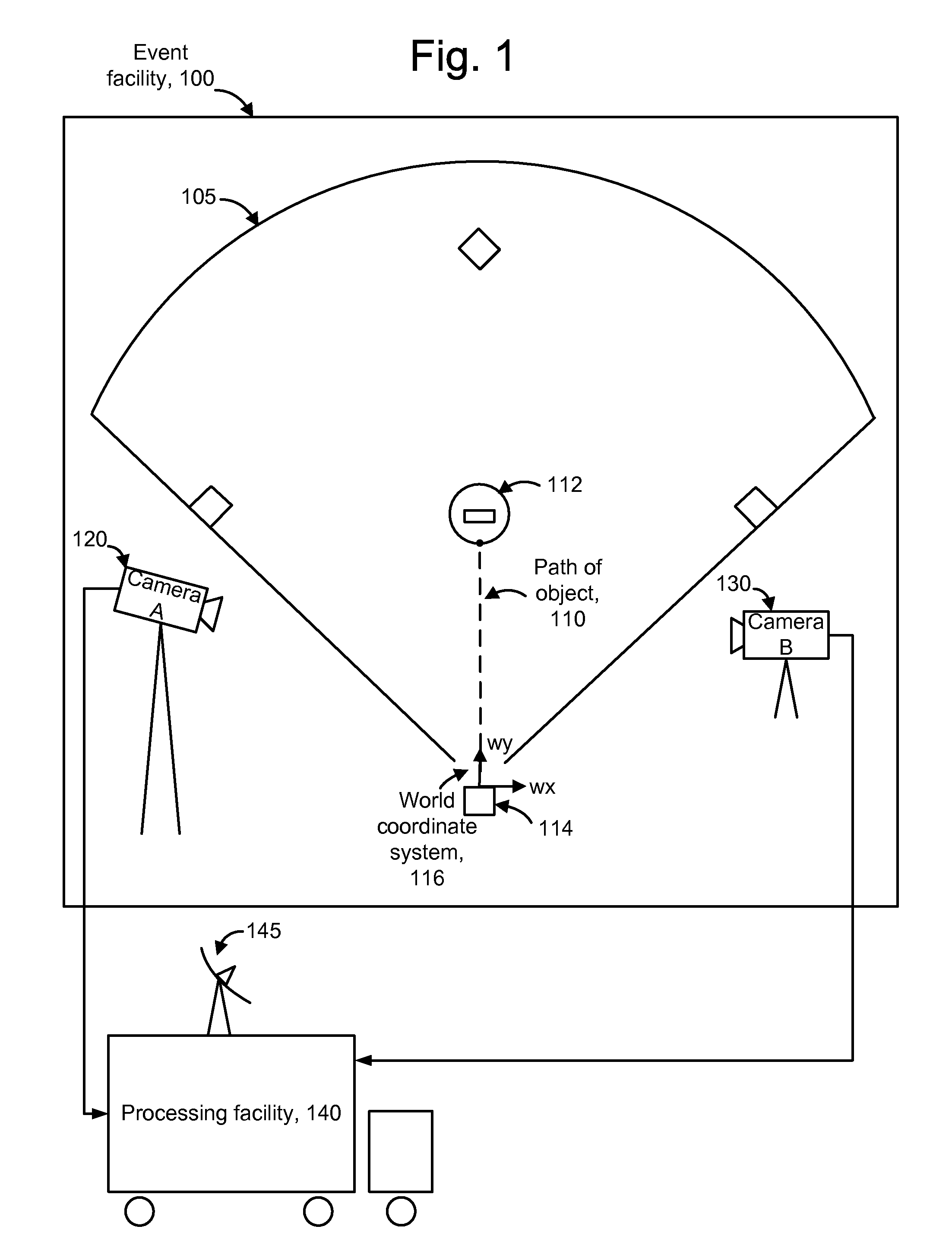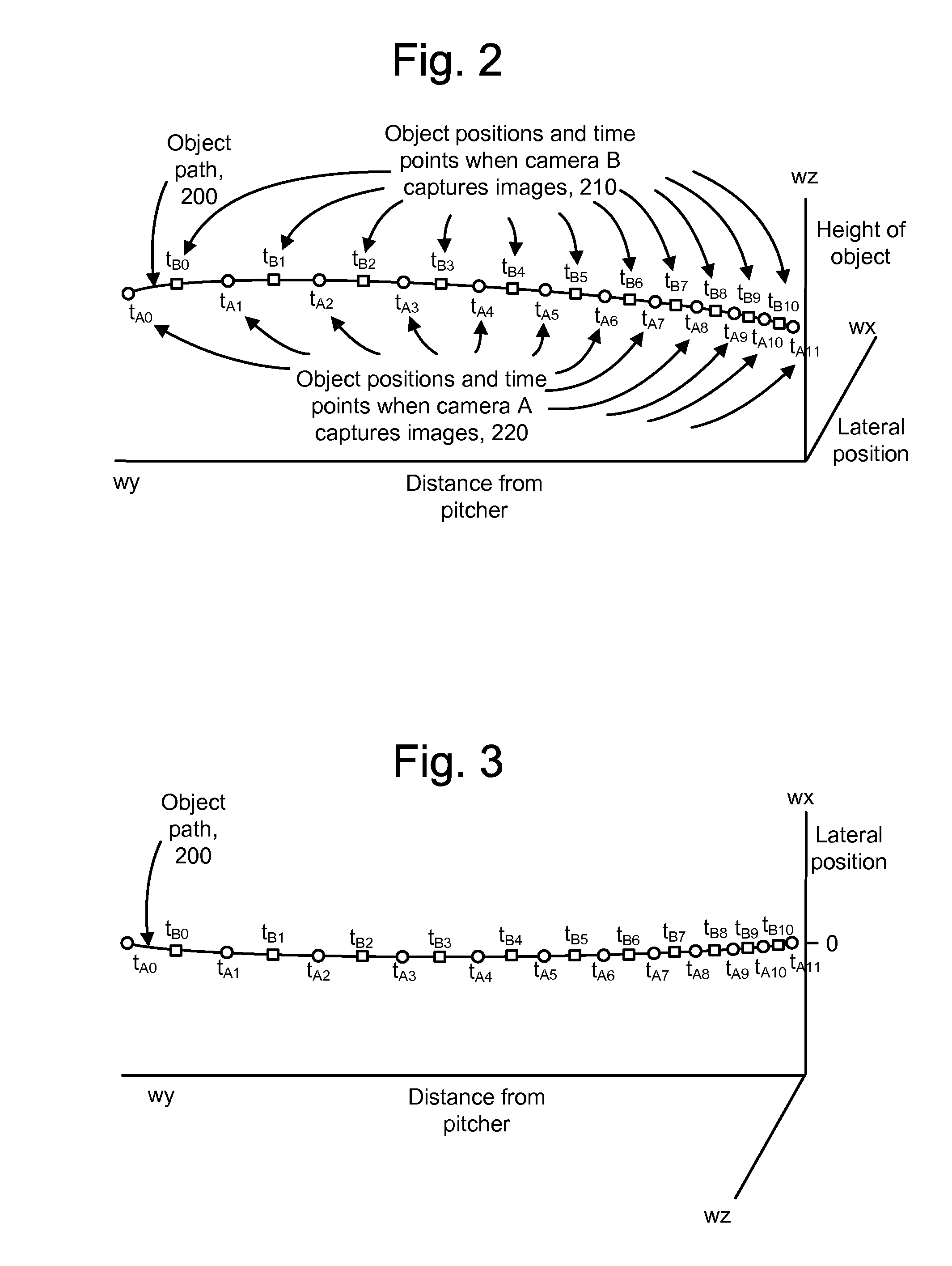Tracking an object with multiple asynchronous cameras
a technology of asynchronous cameras and objects, applied in the field of tracking objects, can solve the problems of difficult detection of failures, cumbersome synchronization of cameras, and questionable quality of resulting position estimates
- Summary
- Abstract
- Description
- Claims
- Application Information
AI Technical Summary
Benefits of technology
Problems solved by technology
Method used
Image
Examples
Embodiment Construction
[0024]The present invention provides a system and method for determining the position and / or path of an object using asynchronous cameras. Asynchronous cameras are free running and use their internal clocks for determining an image capture rate. Thus, asynchronous cameras can capture images at different time points rather than at common time points.
[0025]FIG. 1 depicts a system for tracking an object in an event facility. In one example application, a game object such as a baseball is tracked at an event facility 100 such as a baseball stadium. It will be appreciated that many other applications are possible. For example, a surveillance application can track cars and people, and a sports application can track the trajectory of a golf ball, football, tennis ball, hockey puck or other object. The event facility includes a baseball diamond infield 105 having a pitcher's mound 112 and a home plate 114. A path 110 depicts the trajectory of a baseball thrown from the pitcher to the catche...
PUM
 Login to View More
Login to View More Abstract
Description
Claims
Application Information
 Login to View More
Login to View More - R&D
- Intellectual Property
- Life Sciences
- Materials
- Tech Scout
- Unparalleled Data Quality
- Higher Quality Content
- 60% Fewer Hallucinations
Browse by: Latest US Patents, China's latest patents, Technical Efficacy Thesaurus, Application Domain, Technology Topic, Popular Technical Reports.
© 2025 PatSnap. All rights reserved.Legal|Privacy policy|Modern Slavery Act Transparency Statement|Sitemap|About US| Contact US: help@patsnap.com



